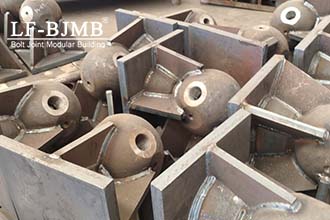Nodal fatigue performance analysis
The node fatigue performance of the space frame structure is primarily influenced by the node type, rod cross-sectional form, connection mode, loading characteristics, and other factors. The common types of nodes include welded ball nodes, bolted ball nodes, and plate nodes. Welded ball nodes connect the bars through welding, with high stiffness and integrality, but the welding process and quality of fatigue performance have a greater impact; bolted ball nodes are connected by high-strength bolts, are easy to install, but the bolt connection parts are prone to stress concentration, resulting in fatigue cracks.
Under the action of load, the fatigue performance of the nodes of the grid structure is manifested in the cyclic loading, and the node connection parts may appear fatigue cracks sprouting and expanding. Fatigue crack initiation usually occurs in the stress concentration area, such as welded joints, bolt hole edges, or the connection parts of bars and nodes. With the increase of cyclic loading, the crack gradually expands and may eventually lead to fatigue damage of the node. Therefore, the analysis of node fatigue performance needs to focus on the stress distribution in the stress concentration area and the crack expansion law.
The fatigue performance of the nodes of the space frame structure can be simulated and predicted through the finite element analysis method. The finite element software is used to establish the three-dimensional model of the node, apply the cyclic load under the actual working condition, analyse the stress distribution of the node in different loading stages, and determine the location and size of the stress concentration area. At the same time, combined with the fatigue crack extension theory, such as the Paris formula, the crack extension path and life are predicted to provide a scientific basis for the assessment of the fatigue performance of the node.
Nodal fatigue performance optimisation
In order to improve the fatigue performance of the nodes of the space frame structure, it is possible to optimise the design of the nodes, the choice of materials, and the construction process.
Node design optimisation
In the node design stage, the stress concentration phenomenon should be minimised. For welded ball nodes, welding process parameters, such as welding current, welding speed, and welding sequence, can be optimised to reduce welding residual stress and improve welding quality. At the same time, the connection angle between the rod and the node is reasonably designed to avoid excessive local stress concentration. For bolt ball nodes, high-strength bolts can be used, and the size and shape of the bolt holes can be optimised to reduce the stress concentration at the edge of the bolt holes. In addition, the stiffness of the node can be increased, such as increasing the diameter or thickness of the node ball, to reduce the stress level of the node and improve the fatigue performance.
Optimisation of material selection
The fatigue performance of the material is an important factor affecting the fatigue performance of the nodes of the space frame structure. In material selection, priority should be given to steel with excellent fatigue performance. For example, high-strength low-alloy steel has high yield strength and good fatigue performance, which is suitable for the grid structure nodes with large cyclic loads. At the same time, for the welded nodes, the welding material should be selected to match the parent material to ensure that the fatigue properties of the welded joints are comparable to the parent material. In addition, new materials, such as fibre-reinforced composites, can be considered to locally reinforce the nodes to improve the fatigue life of the nodes.
Construction process optimisation
The construction process also has an important influence on the fatigue performance of the nodes of the space frame structure. In the welding construction, the welding process should be operated in strict accordance with the welding process regulations to ensure the welding quality. Welding heat input should be controlled during the welding process to avoid overheating of the welded joints, leading to a decline in material properties. For bolt connection construction, it should be ensured that the tightening torque of the bolts meets the design requirements, and the bolts should be tightened several times during the construction process to avoid the decline in fatigue performance of the nodes due to bolt loosening. At the same time, strengthen the quality control in the construction process, strictly check the welding quality of the node and the quality of the bolt connection, and find and deal with construction defects promptly to ensure that the construction quality of the node meets the design requirements.
Nodal fatigue performance is a key factor affecting the safety and durability of space frame structures. Through in-depth analysis of node fatigue performance, combined with finite element simulation and fatigue crack extension theory, the fatigue life of nodes can be accurately assessed. At the same time, optimisation from the aspects of node design, material selection, and construction technology can effectively improve the fatigue performance of the nodes of the space frame structure. In the actual project, a variety of factors should be considered comprehensively, and reasonable optimisation measures should be taken to ensure the safe and reliable operation of the space frame structure.



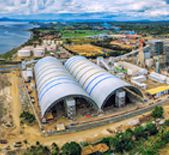
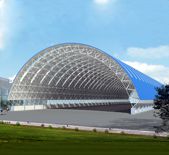
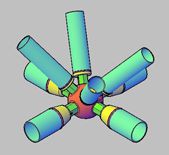
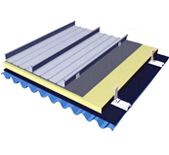
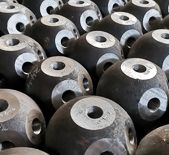



 About Us
About Us 2025-07-18
2025-07-18